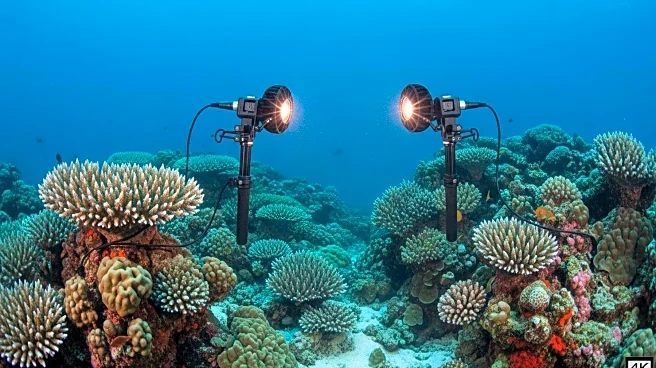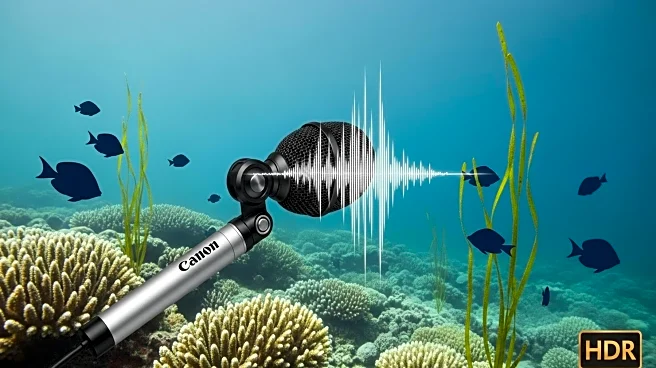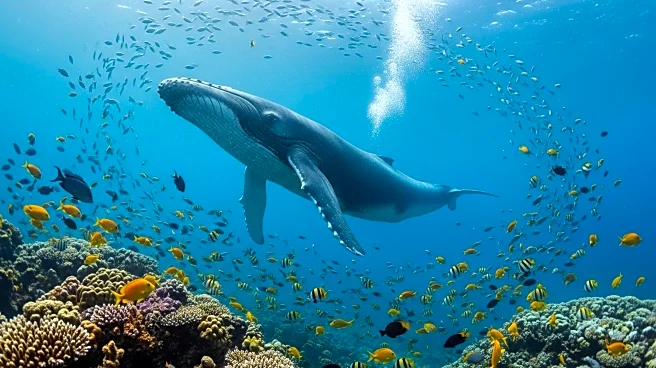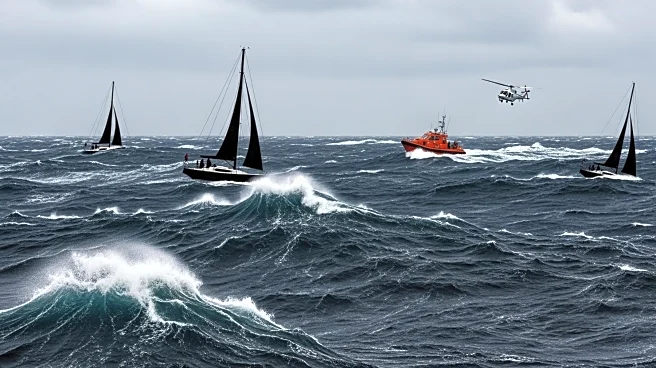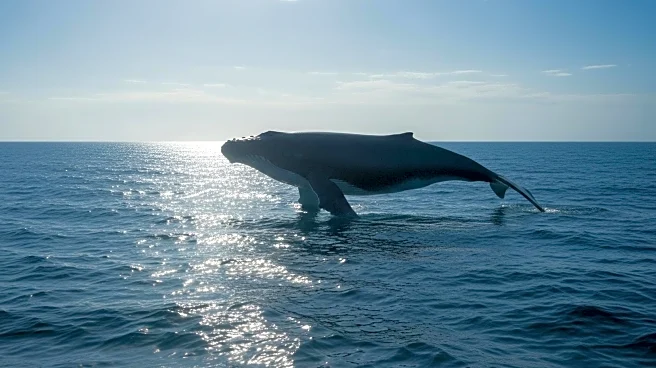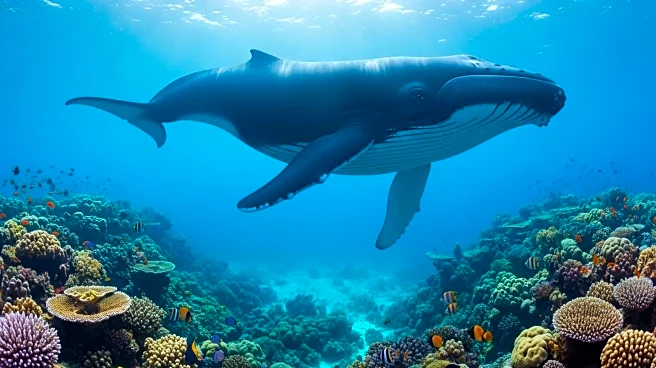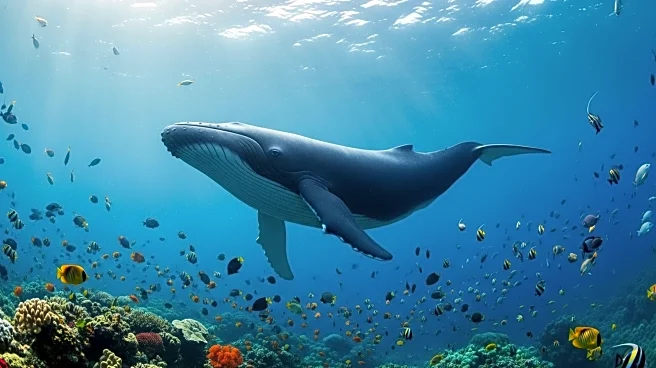What is the story about?
What's Happening?
Scientists are employing new technologies to capture and analyze the sounds made by fish underwater. These sounds, including thumps, honks, burps, and grunts, are being recorded using advanced underwater microphones and cameras. The research aims to improve understanding of fish communication and contribute to marine conservation efforts. Historical accounts of fish sounds date back to Aristotle, and recent technological advancements have made it possible to record these sounds more comprehensively. The FishEye Collaborative, led by bioacoustician Marc Dantzker and marine biologist Aaron Rice, is at the forefront of this research, deploying cameras and microphones in reefs off Hawaii and Curaçao. Their work has identified unique sounds from various fish species, which could aid in monitoring coral reef health and biodiversity.
Why It's Important?
The ability to record and analyze fish sounds has significant implications for marine conservation. By understanding fish communication, scientists can better monitor the health of coral reefs and other marine ecosystems. This research provides a non-invasive method to track rare species, manage invasive pests, and determine optimal fishing seasons. As coral reefs face threats from climate change and ocean acidification, these techniques offer a crucial tool for conservationists. The data collected could help protect ecosystems that millions rely on for food and coastal protection. The research highlights the importance of integrating technology into conservation efforts to address global environmental challenges.
What's Next?
The research team plans to expand their studies to other regions, including Indonesia, and continue developing their recording technology. They aim to create a comprehensive library of fish sounds that can be used for ongoing conservation efforts. The team is also working on using artificial intelligence to automate the analysis of recorded data, which could enhance the efficiency of their research. As the field progresses, these methods may become standard practice in marine conservation, offering a sustainable way to monitor and protect ocean biodiversity.
Beyond the Headlines
The study of fish sounds opens new avenues for understanding marine life and ecosystems. It challenges traditional methods of biodiversity assessment, which can be invasive and labor-intensive. By using passive acoustic monitoring, researchers can gather data without disturbing marine habitats. This approach aligns with broader efforts to use technology for environmental protection, emphasizing the need for innovative solutions to address ecological crises. The research also underscores the interconnectedness of global ecosystems and the importance of preserving biodiversity for future generations.
AI Generated Content
Do you find this article useful?
